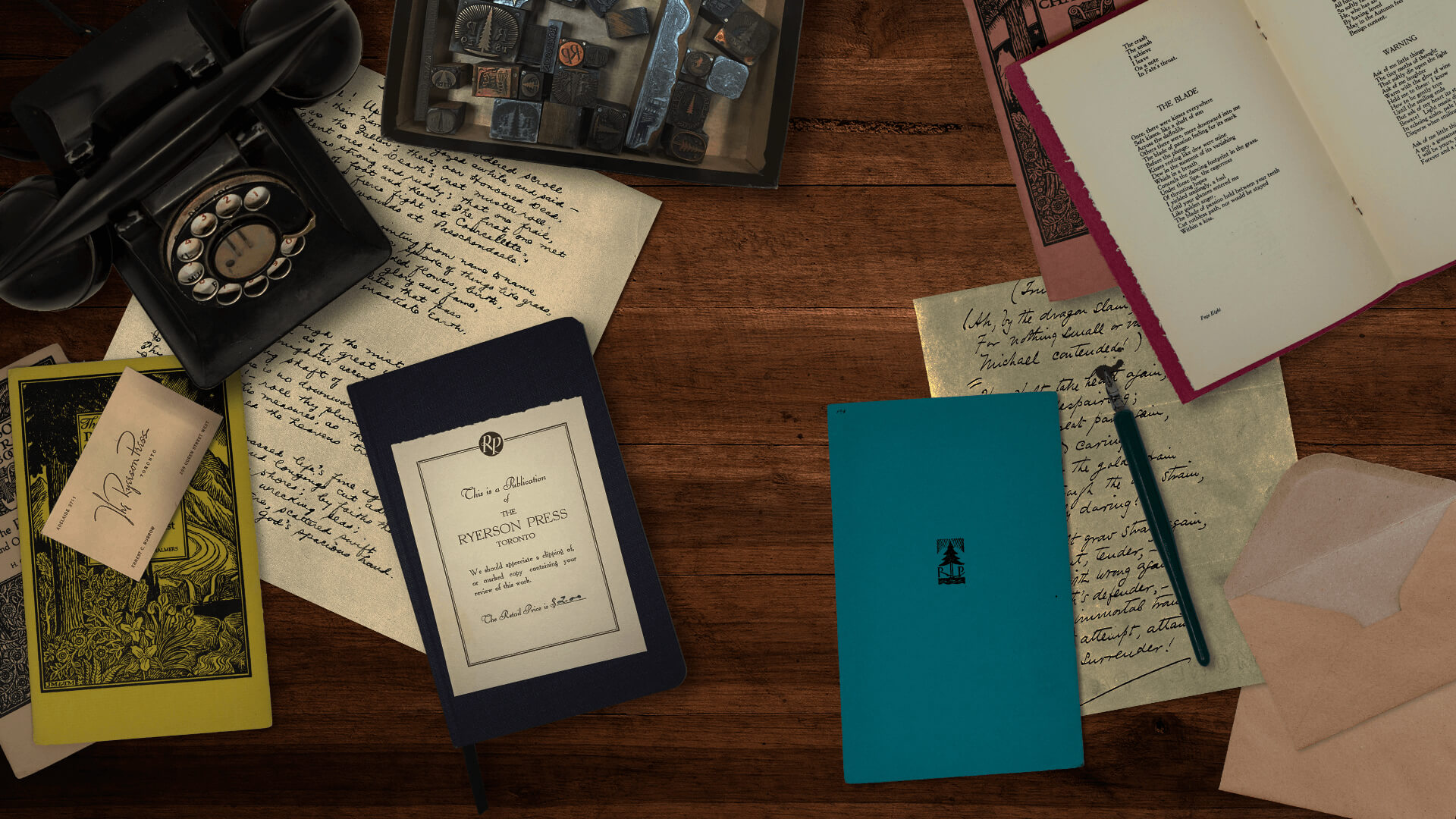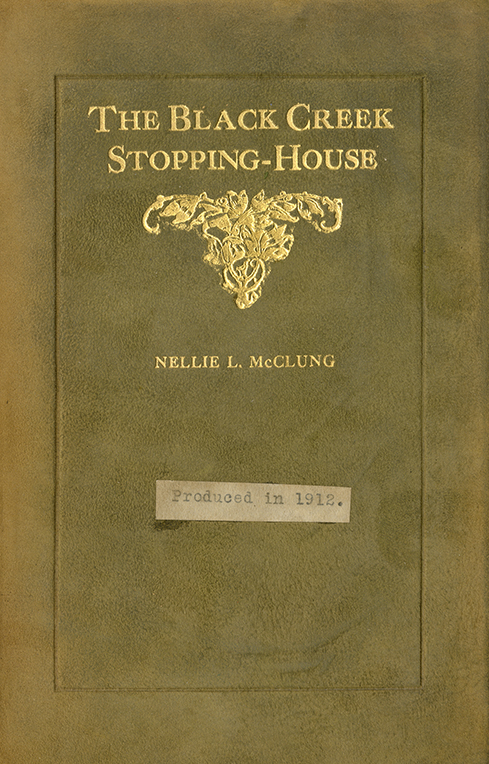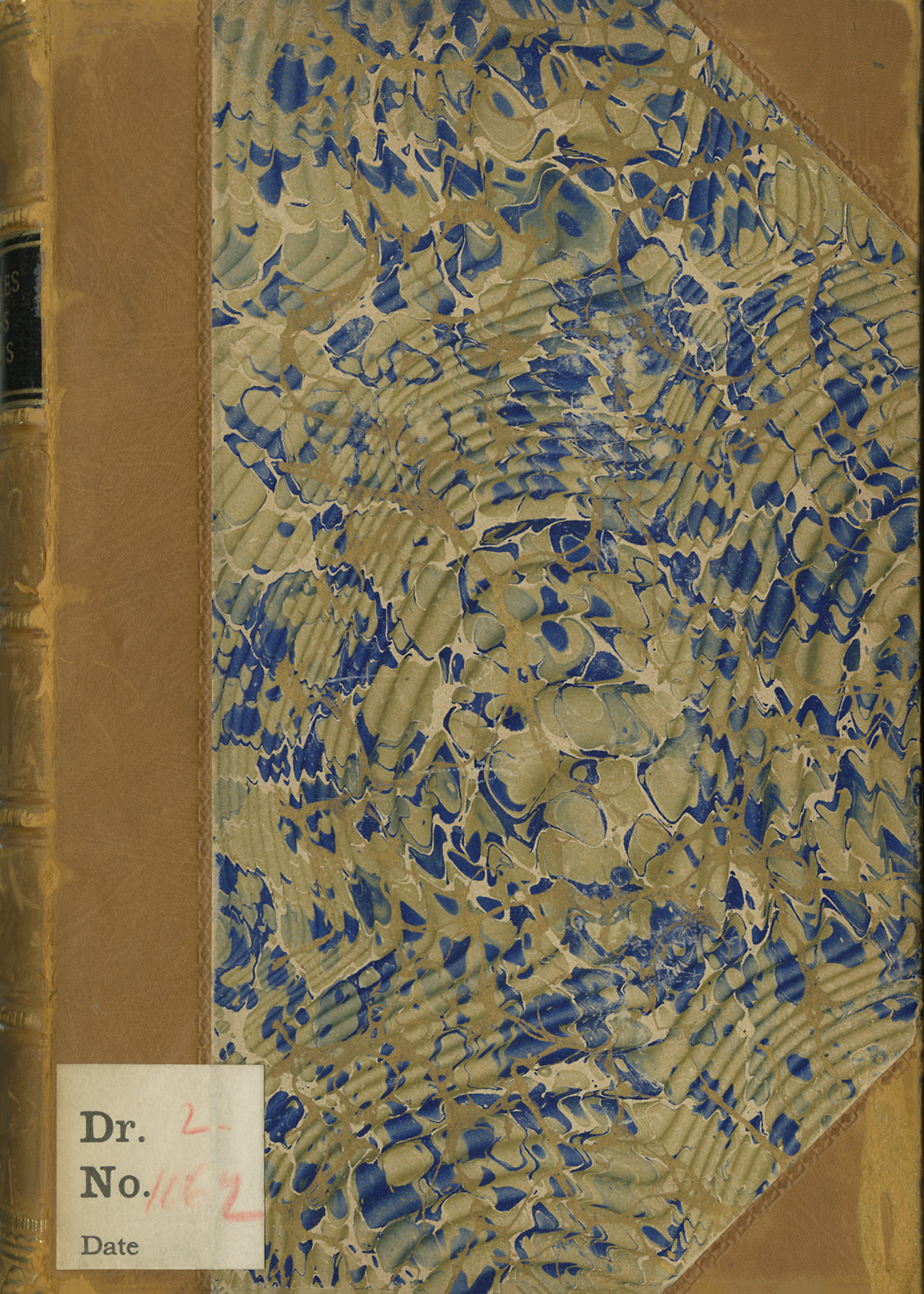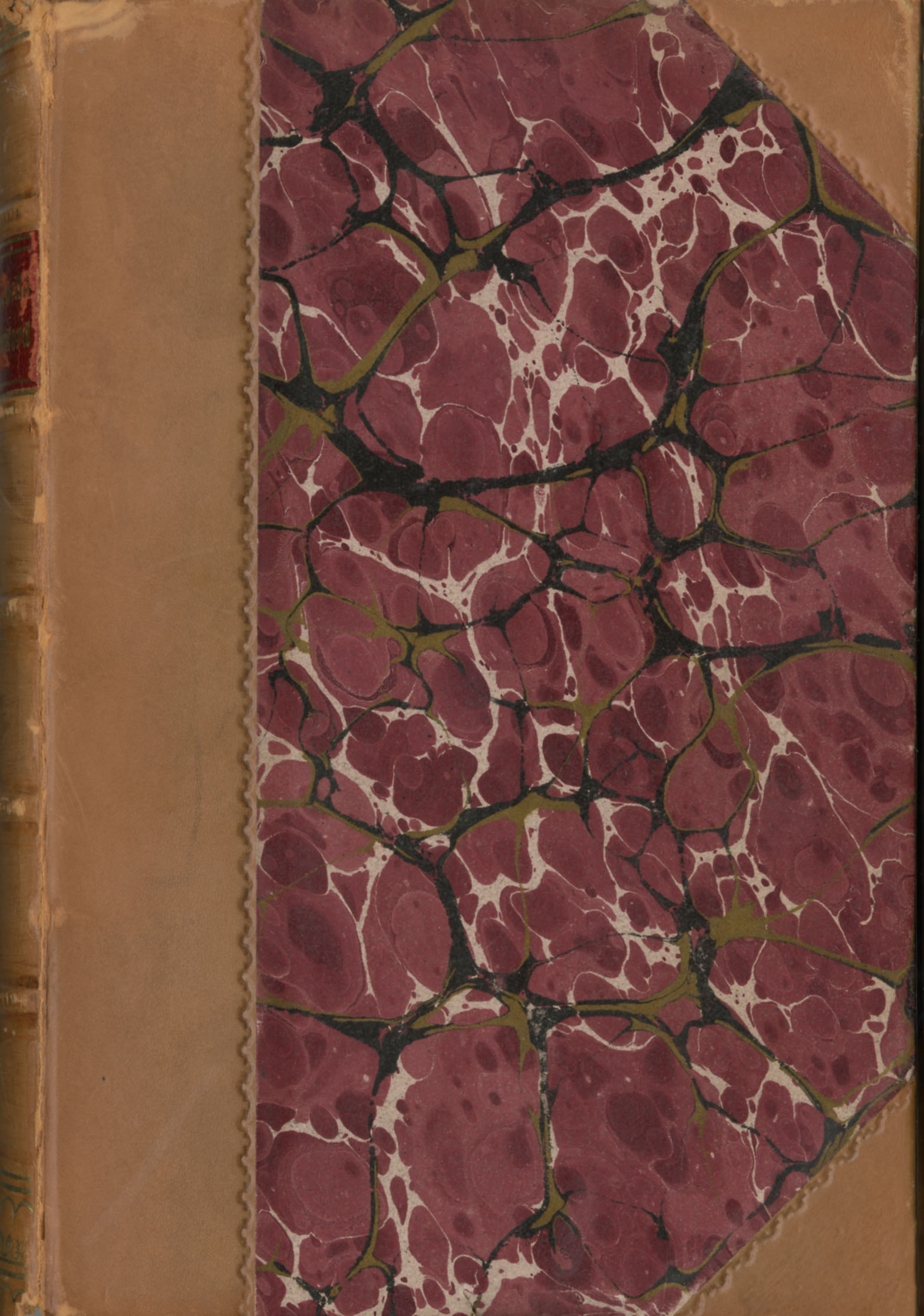Ryerson University Library’s McGraw-Hill Ryerson Press Collection includes an interesting selection of leather-bound books. Leather bindings are flexible book coverings that rely on stiff endpapers, which are pasted in the inside of the front and back covers of books. Limp leather bindings – made from animal skins such as alum-tawed skin, calf skin, goat skin, sheep skin, vellum, and parchment – were introduced during the fourteenth century, when their flexible form first met with resistance. Gradually, however, leather came to be regarded as suitable material to cover and protect manuscripts, bibles, and privately owned books, which could then be placed softly in a reader’s lap.
Leather tanners used a number of agents to give leather specific properties and to prolong its life. In the seventeenth century, for example, to colour leather, tanners used vegetable or animal dyes that contained alum, aluminum, catechu, indigo, iron vitriol, extracts of logwood, and oak gall. To further improve its colour, the leather would be polished with an alcoholic substance such as mastic, saranac, or shellac.
Limp leather bindings became increasingly popular, so much so that by the late nineteenth century they were in wide use as covers for a diverse range of books: bibles, diaries and pocket books, dictionaries and textbooks. These bindings also became important aesthetic features of books. Publishers, in particular, found limp leather to be a material that could be easily manipulated and decorated in such a way as to tie in with a book’s content. They knew that a book bound in well-dressed limp leather appealed to readers and collectors alike.
Unfortunately, the natural process of aging had an inevitable effect on limp leather bindings. If they were left on an open bookshelf for more than eight years, for example, limp leather bindings deteriorated due to their exposure to sulphuric acid in the air. Not only was this acid absorbed by the leather, it also corroded the exterior and interior of a book.
The natural environment also took its toll on limp leather bindings. When air humidity was lower than forty per cent, limp leather bindings began to dry: their capillaries narrowed, the result of collagen fibres colliding and hydrogenous connections strengthening. Such drying could physically deform leather bindings, as edges of front and back covers curled or folded. When air humidity was higher than seventy per cent, limp leather bindings began to absorb moisture, which exposed them to fungi. High humidity could also damage limp leather bindings, since fibres stuck together and flaking ensued when the collagen in leather became spongy. In fact, over time all leather-bound books were subject to moisture due to the presence of collagen in leather, a protein used in its production.
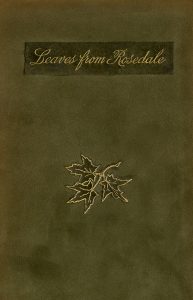
Included in the McGraw-Hill Ryerson Press Collection is Leaves from Rosedale (Toronto: William Briggs, 1905) by Charlotte Beaumont Jarvis (published under the pseudonym Rosedalia). The book’s limp leather binding extends slightly beyond the edge of its texturized end papers, which has led to breakage and tearing, especially near the corners. On the front cover, the title is foil stamped in gold italicized lettering within a debossed rectangle. Below the title, also foil stamped in gold, is an illustration of three maple leaves. Although the limp leather binding shows definite signs of aging and decay along its edges, its colour is very well preserved.
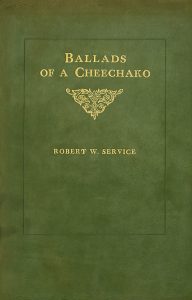
Robert W. Service’s Ballads of a Cheechako (Toronto: William Briggs, 1909) is also bound in limp leather, but it shows little signs of either age or decay. The book has a green- pigmented leather binding that is in excellent condition, which suggests that it might have been a later addition. On the front cover, the title and the author’s name are foil stamped in gold capital lettering. An embellishment, also foil stamped in gold, appears between the title and the author’s name. On the spine, the title and the author’s name are foil stamped in gold capital lettering. The book has a gilt fore-edge and, in contrast to the traditional deckle edge that would have been common at the time of publication, the book’s pages have been cut uniformly. Overall, this saddle-stitched book has been impeccably preserved.
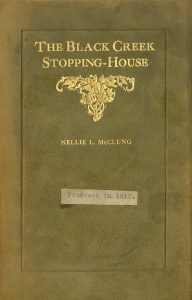
Nellie L. McClung’s The Black Creek Stopping-House and Other Stories (Toronto: William Briggs, 1912) is bound in moss green leather, which has deteriorated over time. The leather has dried, the edges of the front and back covers have turned light brown, and a black powdery substance flakes off the surface when the binding is touched, likely the result of oil having been applied to aid in its preservation. On the front cover, the title and the author’s name are foil stamped in gold capital lettering. An embellishment, also foil stamped in gold, appears between the title and the author’s name. Pasted on the cover below the author’s name is a separate rectangular strip of paper, which is beginning to peel off, with the date of publication. The top edge is gilt. Since its spine and edges have begun to deteriorate, the volume is tied together with a white string. Nonetheless, the book is in fairly good condition.
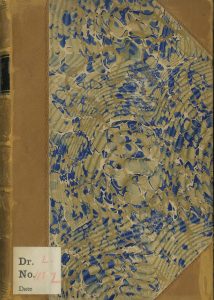
In the McGraw-Hill Ryerson Press Collection, two “half-bound books,” as they are known, are also notable for their use of leather. Half-bound books are partially bound in leather, usually along the spine and all corners of the front and back covers. The rest of the binding uses other materials, typically cloth or decorative paper. In the case of half-bound bindings, the leather is stretched tight and wrapped around a hard cover that already encases the body of the book. As a result, half-bound books are generally well preserved.
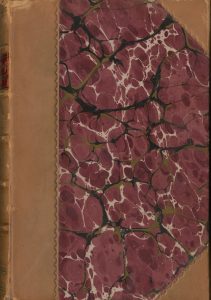
Half-bound in brown leather, with decorative marbled paper covers – paper that has veined or mottled patterns that imitate marble – are the second edition of Charles Mair’s Tecumseh: A Drama and Canadian Poems (Toronto: William Briggs, 1901) and J.W. Garvin’s edition of The Collected Poems of Isabella Valancy Crawford (Toronto: William Briggs, 1905). Both books are neatly saddle-stitched, capped with a silk headband at the top and bottom. Raised bands run down the spines (typically where the stitches would align), which are also decorated with embossed ornamentation. On a coloured portion of the top of each spine, the title is foil stamped in gold lettering. Apart from minor tears, the bindings of both books show little sign of damage.
Since leather-bound books require special care and carefully regulated storage facilities, it is not surprising that leather, once prized for its malleability, eventually fell out of favour as a binding material. There are ways to restore leather bindings, but the techniques are both time-consuming and costly. Today, to prevent further decay and to increase their lifespan, all the leather-bound volumes in the McGraw-Hill Ryerson Press Collection – both limp leather- and half-bound books – are housed in an air filtered room to ensure that they are available for future use by students, scholars, and anyone interested in the rich history of book binding.1
1 For more information on leather bindings, see O.I. Perminova, “The Preservation of Leather Bindings of Cartographic Atlases,” IFLA Journal 20.3 (1994): 306-11; Bernard C. Middleton, Aldren A. Watson, Seymour Fleishman, and British Library, The Restoration of Leather Bindings, 4th ed. (British Library, 2004); and Robin O’Hern and Ellen Pearlstein, “Label Removal from Deteriorated Leather-Bound Books,” Journal of the Institute of Conservation 36.2 (2013): 109-24.
